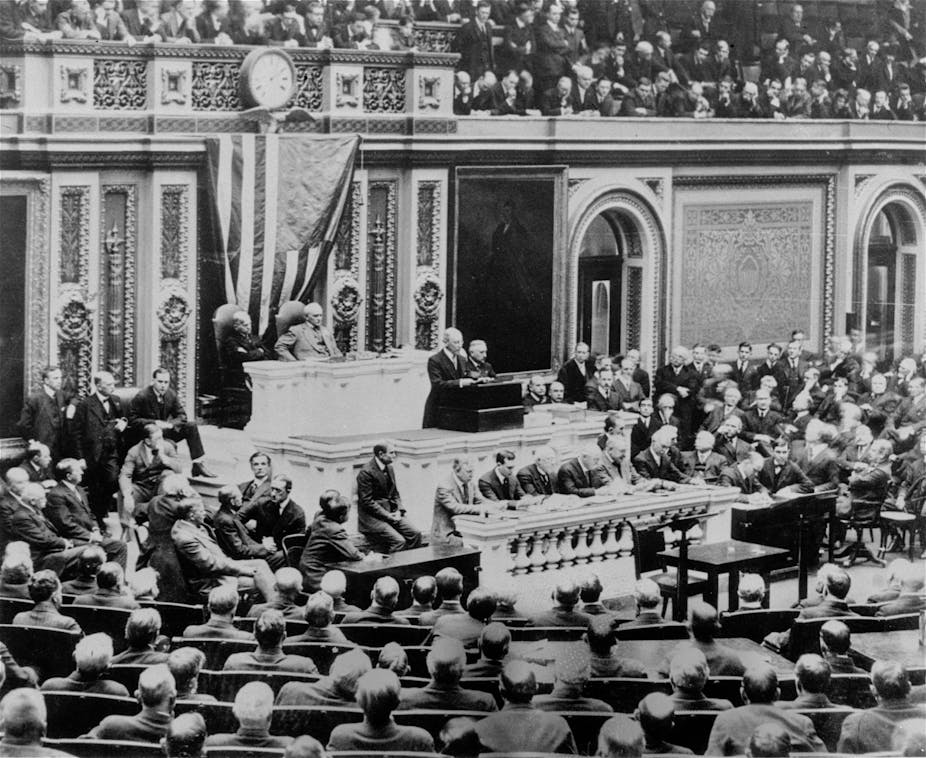On December 7th 1941 the Japanese Empire attacked Hawaii in a premeditated attack that killed many Americans and greatly damaged our navy. That same day they attacked Hong Kong, Guam, Wake, the Philippines, Malaya, and Wake. They ran a military campaign through all of the pacific after feigning peace with the US for weeks. The day after President Wilson addressed congress and requested to declare war on the Japanese. He even went so far as to say that the Japanese Empire and the US were already in a state of war since they had attacked our territories in the Pacific. This speech also served as a motivator that, while damaged, we could still win this war. He key quote regarding himself and the American people was "we will win through to absolute victory". And, evidently this was true as we did go on to win the war. His speech motivated the congress men and women so much so that it inspired a near unanimous vote to follow public opinion and enter the war. The one vote against the war was Jeanette Rankin, a lifelong pacifist and the first woman elected to congress. She felt that this would be her only chance to stop war and that she should take it. Unfortunately, almost nobody in America agreed with her at the time, and the war went on anyway. In the end, FDR's speech was successful, and war was declared. This speech would go down as the infamy speech due to the grave situation of the US being attacked on its home soil for the first time since 1812.
FDR's war declaration:

Woodrow Wilson's war declaration:

FDR's war declaration:

Woodrow Wilson's war declaration:

Comments
Post a Comment